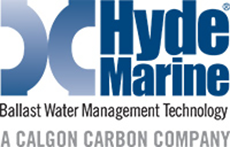Ballast water focus must shift from equipment to compliance, workshop hears
A change of emphasis in ballast water treatment is required, participants in a Lloyd’s List workshop have said, beginning with a cross-sector sharing of knowledge
IT MIGHT never be possible to kill off all invasive species found in ships’ ballast water by means of treatment systems, a Lloyd’s List-hosted workshop heard during London International Shipping Week.
However, participants agreed that progress was being held back by an attempt to attain absolute elimination. Removing the need to hit a ‘magic number’ would have helped to solve so many of the problems the shipping industry is facing over ballast water treatment.
The issue took on a new currency in September 2019 because existing ships meeting the D-1 ballast water exchange standard are now required to have a compliant treatment system with effect from the next IOPPC (International Oil Pollution Prevention Certificate) renewal.
Ballast water treatment systems have been evolving since the early 2000s. Initial systems were primitive and broke down frequently, but manufacturers offered little support to shipowners and their engineers on board. The standard response to a breakdown, the workshop heard, was for engineers to cover the equipment and forget it was there.
Shipowners who took a more responsible approach and persevered in spite of setbacks found many manufacturers unhelpful when retrofitted systems broke down, while shipyards installing systems on newbuildings put great pressure on owners to fit equipment that was subsequently found only to work in as far as it engaged and operated without alarm or shutdown, yet did not kill the organisms as required.
Choosing to be an early adopter has not always been a positive experience. On the one hand, competitors felt under no pressure to match the high cost of installation and operation, while on the other hand constant upgrading of equipment and evolving regulations meant that treatment systems kept on changing.
“Shipowners really do want to be cleaner; let’s discuss what is enforceable, acceptable and implementable.”
Participants also heard that ballast water treatment systems have been only one of many new technologies that have arrived on board ship over the past decade.
In essence, one speaker explained, “this is a municipal treatment system designed to treat a flow of water for a medium-sized city, taking what is put into a plant-sized facility on land and shrinking it down to fit into an engine room with no space, then removing the trained operators and turning it over to [engineers] who have a thousand other things to do and have no interest, knowledge or care because they can’t see the water is different”.
Training of engineers — once regarded as an afterthought — has significantly improved as the time for compliance approached. Some seafarer training centres have been given treatment systems, with specialists from manufacturers talking engineers through each stage of the process. Other manufacturers, recognising the pressure engineers are under, have opted to make system operations as simple as possible and provided extra support through web- and video-based training.
However, while workshop participants acknowledged that progress had been made, particularly since early 2018, much remains to be done. Most obviously, participants believed, there is a need for the industry to share knowledge and experience in a transparent way on the grounds that the ballast water treatment regulation now has to be complied with by all merchant ships.
Shipowners’ concerns are often overlooked, one speaker said, yet they have positive and negative experience to share with the rest of the industry. Manufacturers have ploughed huge sums into their treatment systems over the past decade, with product design and build, software development, and testing and validation all incurring cost without any guarantee of return on that investment. Class is struggling to understand both system installation and performance, flag states need to know their obligations, and port state authorities are seeking guidance on implementation.
Legislators should be spending more time talking to the industry, another speaker urged. “They should know what class really needs, what manufacturers are capable of doing, how shipowners can take ballast water treatment systems on board along with electronic charts, scrubbers, and data analytics technology, and what engineers can operate.” They must gather knowledge from all sectors to learn “how to create regulation that is both implementable and enforceable.”.
Bridging this cross-sector knowledge gap is important if ballast water is to be treated effectively by way of better equipment and smarter intelligence. Speakers agreed that can only be done through collaboration, removing the quest for that ‘magic elimination number’, and understanding that killing off invasive species is an environmental issue. Shipowners must invest time and effort to understand their ships’ trading patterns and the water conditions they would face: sailing in muddy rivers requires a different system from sailing in the open ocean.
“We have sat on feedback for years,” one speaker concluded, “which could have helped us to share knowledge.” Another suggested that the industry could have had super-efficient systems 10 years ago if the ballast water regulation had been complied with at the time, However, he added that the discussion from now on must be about compliance, not equipment or training.
“Shipowners really do want to be cleaner; let’s discuss what is enforceable, acceptable and implementable.”
Workshop participantsSahan Abeysekara, Principal Specialist, Technical Authority for Ballast Water, Lloyd’s Register |
If you missed our webinar on the topic of ballast water, you can listen to it on demand here.


